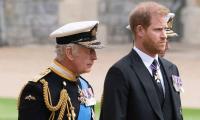Prime Minister Nawaz Sharif is not going to go gently into the good night. We know this because he and his proxies have said it. We know it because he has been in this kind of situation before. We know it because that is who he is. Most of the national conversation is now correctly focused on what will happen next. The most fun tidbits are the ones that speculate on which a member of the Sharifs’ inner circle will get to be prime minister in his stead, if the Supreme Court removes him from office. The posters in Lahore featuring Shahbaz Sharif as the next prime minister are also fun. In all this fun, however, let us take a moment to mourn what has been lost, as Nawaz Sharif the prime minister paints himself deeper and deeper into a corner.
When he won the election in 2013, Pakistan voted for a PML-N that it trusted would improve the economy, and fix infrastructure (especially electricity). The victory in 2013 was widely misinterpreted by many as a confirmation of the viability of Nawaz Sharif politics a la 1990s. But the 30-year-old voter in 1990 was 53 years old in 2013. And she will be 58 in 2018. Elections, as social, economic and political processes, are not as romantic or nostalgic as op-ed writers. They take place within the construct of the time and space continuum where they occur.
The reason many voters chose the PML-N in 2013 likely had more to do with what happened in 2012, than what happened in 1999. But the entire old guard of the PML-N – which is most of the core cabinet of this iteration of Nawaz Sharif – are so scarred by 1999 that they fundamentally failed to see what the voter saw in 2013. They kept seeing replays of the 111 Brigade and the machinations of the Army. The voter saw the Lahore Metro Bus, built in less than eleven months. The voter saw more by-passes built across central and north Punjab than ever before. The voters’ last memory of an overbearing military was Gen Musharraf. By election day on May 2013, Gen Musharraf was a distant memory.
Unlike his nostalgic peers, Nawaz Sharif knew that ultimately it was not his pro-normalisation with India narrative nor his take-on-the-army bravado that won him 2013. It was the untiring and ceaseless work ethic of Shahbaz Sharif that delivered the 2013 election to him. And it happened at the expense of a more exciting and more appealing candidate in the shape of Imran Khan.
So the first order of business for PM Sharif in 2013 was to establish an authoritative structure of delivery around him (in order to deepen the advantage that won him the election). This is what explains the mass migration of Chief Minister Sharif’s core team, comprising Fawad Hassan Fawad and others, to Prime Minister Sharif’s office. Of course, the PM had been in administrative hibernation since 1999 – whilst CM Sharif had run Punjab from 2008 onwards. Three things had changed fundamentally since the last time Nawaz Sharif had a chance to run the country.
First, the CSP aka DMG aka PAS officer corps had evolved, from commanders of a rigid machine bureaucrat structure – which meant issuing orders that got followed – to practitioners of sophisticated political entrepreneurship, which meant getting the job done, by any means necessary (sidebar: The dramatic changes in the texture and substance of the bureaucracy between 1999 and 2008 is one of the great untold stories of Pakistan’s evolution, and one of the least explored outcomes of Gen Musharraf’s rule).
Second, the 18th Amendment of 2010 meant that the command and control capacities of the federal government had been significantly eroded. This meant that, to exert authority over the provinces, the PM needed the sophistication of the same bureaucracy (whose overall technical competence had taken a nosedive over the almost decade and a half that he spent variously in Attock, Jeddah, London and Raiwind). Failing that sophistication, he relied on Ishaq Dar’s ability to skew the incentives of the provinces through the Ministry of Finance.
Third, and perhaps most importantly, Nawaz Sharif had gotten soft and old. Realising this, he began to establish the credentials of his daughter, Maryam Nawaz Sharif, as the party leader after him. This had three important impacts. First, it helped create a new dimension within the party – where younger politicians with no relationship with the PM himself, and no record of service to the PML-N could work on proving their Noon League credentials. Second, it caused a major rift between the Sharif brothers, one that many have sought to exploit without success. And third, it expanded the risk profile of the party substantially. Maryam added an unprecedented new layer to what the Noon League stood for, but with that came added risks: the spectrum of which ranges from beneficial ownership of undeclared wealth to expressions of outrage on Twitter at inopportune times.
The Panama mess and the JIT catastrophe have Nawaz Sharif written all over them – but the botching of the response to the crisis is rooted in the dysfunctional political and administrative machinery that this version of Nawaz Sharif has built around him.
On the political front, the prime minister is disengaged from the electoral dynamics faced by his MNAs and MPAs. It is bureaucrats like Tauqir Shah and family members like Hamza Shahbaz Sharif that do the heavy lifting on the political front. Shah is cooling his heels in Geneva after the Model Town fiasco, whilst Hamza is wondering what he had done wrong to have Maryam skip the line ahead of him.
On the administrative front, the slow alienation of Shahbaz Sharif – who is the only senior PML-N member that knows how to do anything substantive in terms of delivery – has produced a scene in Islamabad in which the old Nawaz Sharif guard takes turns fighting each other, whilst bureaucrats valiantly attempt to continue building infrastructure and electricity generation capacity with virtually no political direction at all. The absence of any reforms by this government has much to do with this dysfunctional dynamic within the federal cabinet. The TV tickers and newspapers love the spectacle of Khawaja Asif versus Chaudhry Nisar versus Ishaq Dar versus Ahsan Iqbal – but the practical implications of these contests are a federal government that is largely incapable of grappling with national challenges in a meaningful way.
In short, even if the questionable accumulation and holding of his family’s wealth a la Panama Papers had not almost disabled the prime minister, his handling of the office of prime minister has not been a lesson in statesmanship.
Miraculously, despite all this, substantial progress on infrastructure and in the economy has taken place on his watch. Instead of taking advantage of beneficial geopolitics, and fortuitous oil prices, PM Sharif has allowed conspirators to take advantage of his weaknesses.
There is little doubt that among those that hound the PML-N today are many who do so out of political spite, or out of an allergy to elected leaders. We do live in a complex and weak democracy. No one knows this better than Nawaz Sharif. No one should have been better prepared.
What we are witnessing now is an unravelling of epic proportions. PM Sharif may well survive the Panama case at the Supreme Court, but he has been paralysed for far longer than this case has existed. For those who are more concerned about the longer arch of history, this version of PM Sharif was supposed to have transformed relations with India, and altered the balance of power between civilians and the military. Not even the most enthusiastic Noon League supporters will claim victory on this front. Indeed, many of them openly proclaim the hidden hand of the military in the immobilisation of PM Sharif. In the depths of this accusation lies a kernel of truth that is most damning for the PML-N.
If the Lion of Raiwind can’t overcome the military complex in Pakistan, who can? And perhaps more immediately, if he can’t, then what good is he anyway?
The writer is an analyst and commentator.
A representational image showing residents walking at a wholesale market in Karachi. — AFP/FileOnce again there is...
A representational image showing late Pakistani human rights activist and Supreme Court lawyer Asma Jahangir. —...
A representational image showing a security personnel sanding guard beside a ship carrying containers at Gwadar port....
A health worker administers polio vaccine drops to a child during a door-to-door polio vaccination campaign in Lahore,...
Armed militants of the banned Tehreek-e-Taliban Pakistan pose for a photograph in Orakzai Agency. —...
An aeroplane of the national flag carrier of Pakistan is seen in this file photo. — AFPWhile Pakistan considers...







